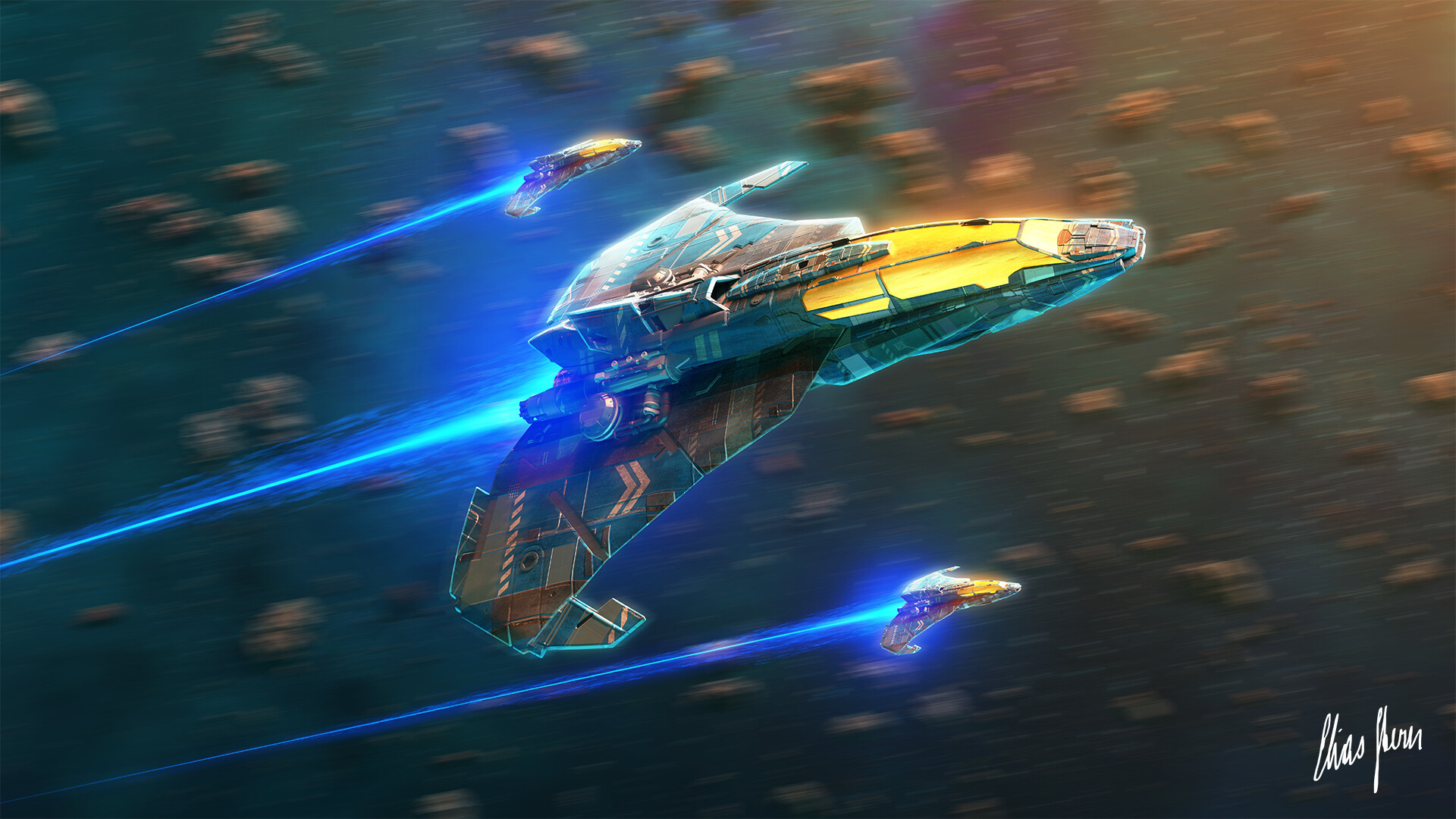Mr. Janus
Character

OUT OF CHARACTER INFORMATION
- Intent: Create an open market, light fighter meant for carrier and cruiser defense
- Image Source: Artstation
- Canon Link: Starfighter
- Permissions: I own Treatech
- Primary Source: N/A
- Manufacturer: Treatech
- Affiliation: Treatech Holdings
- Market Status: Open-Market
- Model: LSF-1 "Skyhawk" Picket Ship
- Production: Mass-Produced
- Material:
- Durasteel Structure
- Plasteel Armor Plating
- Transparisteel Cockpit Windows
- Classification: Light Picket Ship (Point defense)/Fighter
- Length: 9m
- Width: 8.5m (wingtip to wingtip)
- Height: 5m
- Armament: Low
- Nose Mounted Ion Cannons (2)
- Torpedo Launcher (1) (Single Shot)
- Fusilage Mounted Point Defense Beam Cannon Turret (2 top, 2 bottom)
- Defenses: Average (Very Low with SLAM active)
- Squadron Count: High (18)
- Maneuverability Rating: High
- Speed Rating: Low (High with SLAM active)
- Hyperdrive: No.
- Life Support
- Ejector Seat
- Communications Array
- Small Counter Measures Array
- Flares, Chaff
- Automated Fire Suppression Systems
- SLAM
- Standard Sensor Packages
STRENGTHS
- Disabler
- While overall damage output is low compared to superiority-oriented ships, the Skyhawk's ion cannons are excellent at overloading shields and temporarily shutting down systems, letting Skyhawks retreat away from dangerous situations
- Fighter-Screen
- High fighters-per-wing allow ships to rely on the fighters's incredible performance as point defense ships. Skyhawks have a high percentage success rate at defending against incoming missiles and projectiles, while also being capable enough to occupy enemy fighter craft
- Heavy Shield
- The ASP-7 does not offer full protection of the ship, but provides a higher damage threshold than conventional bubble shields. This helps to counteract the Skyhawks light frame and weak armoring
- Carrier Locked
- In exchange for their size, Skyhawks had to sacrifice a hyperdrive. They were built small specifically to take up minimum hanger space so even a single wing would be sufficient to perform its designated role
- Power Drain
- The Skyhawks mini-reactor cannon provide power to both the SubLight Acceleraton Motor and the ASP-7 shield projector at the same time. Pilots must choose between increased speed or functioning shields based on the situation
The Skyhawk is a small, light, and cheap fighter that can be deployed in large groups from carriers or from in-atmosphere. The low cost, easy maintenance, and small size make them a good choice for planatery defense forces as well as traditional fleets.
The Skyhawk's primary role is as a picket ship, escorting either its carrier or another ship and acting as primary/supplimentary point defense, detecting and shooting down incoming missiles and even challenging lighter fighters with its two PD beam lasers. The PD lasers can be targeted by the ships's droid brain, taking full advantage of their 360 degree firing arcs to target missiles and ships from any position the pilot puts the ship in.
The Skyhawk's secondary role is a fighter. While designed around screening for larger ships, Treatech decided to double down on this role, equipping the Skyhawk with ion cannons. These weapons allow the LSF-1 to disable the shields of enemy fighters or bombers and overload their systems, leaving them easy targets for their escorted ship to destroy. In a case where a Skyhawk is isolated, the SLAM function would allow it to make a quick escape while the enemy is attempting to recover from the effects of the ion cannon. Each Skyhawk is equipped with a single homing proton torpedo in case facing a ship with heavier defenses. These aren't really threats to larger ships on their own, but can become dangerous when fired at the same target en-masse.
Equipped with light armor, the Skyhawk relies on the ASP-7 for most of its defensive capabilities. The power required by the SLAM draws from shield to boost the ship's speed, so while SLAM is active, the shields drop and leave the LSF-1 vulnerable. Furthermore, because the ASP-7 only projects an arc, the Skyhawk struggles when outnumbered. Usually this is not a problem, due to the high squadron size, but as a battle drags on, Skyhawks suffer losses and become vulnerable to being outnumbered and shot down due to the limited protection arc of their shields.






